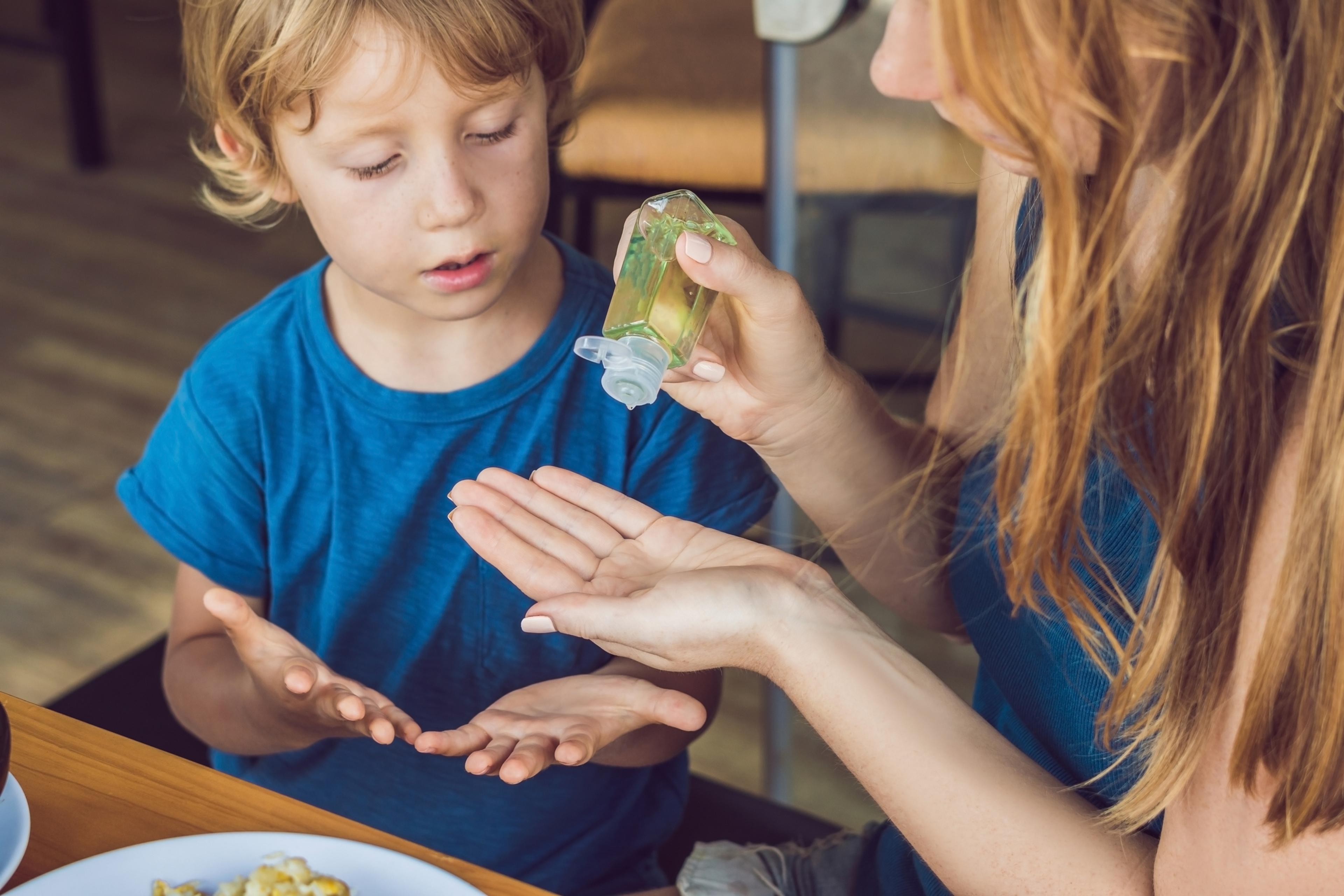Hand Sanitizer and Norovirus: What You Need to Know
Amy Barczy
| 3 min read
Amy Barczy is a former brand journalist who authored...

Keeping our hands clean is an important part of preventing the spread of viruses and bacteria. But it turns out all sanitizing methods may not be created equal.
While using alcohol-based hand sanitizer may be fast and convenient, it does not offer the same cleaning power as scrubbing hands together with soap and water.
Hand sanitizers that contain at least 60% alcohol may be able to quickly reduce germs on your hands in some situations, but they are not fully effective at eliminating:
- Norovirus, a highly contagious virus that causes diarrhea, vomiting, nausea and stomach pain
- Cryptosporidium, a microscopic parasite often found in untreated water or recreational water that causes watery diarrhea
- Clostridium difficile (C. diff), a bacteria that causes life-threatening diarrhea
Norovirus can spread easily, quickly and in several different ways – which is why it’s often responsible for outbreaks in restaurants, daycare centers, schools, long-term care facilities and cruise ships. That’s because norovirus is spread through contaminated particles – either in vomit or diarrhea – and is a fairly resilient virus.
It can be spread both through direct contact with someone with norovirus, consuming foods or drinks contaminated by norovirus – as well as touching any surfaces or objects contaminated with norovirus and then putting unwashed fingers in your mouth.
The norovirus itself is tough: it can survive temperatures as high as 145 degrees, and may not be killed on food through quick steaming.
Additionally, a person with norovirus is most contagious when they have symptoms, and during the first several days of recovery. However, studies indicate norovirus can still be spread for two weeks or more after a person has recovered.
Research continues to increase against hand sanitizers, indicating they may not be effective as a substitute for soap and water. And a recent survey of 161 long-term care facilities in the United States indicated there may be an association between the use of alcohol-based hand sanitizers for routine hand hygiene and an increased risk for outbreaks of norovirus.
When not to use hand sanitizers
The U.S. Centers for Disease Control and Prevention (CDC) advise individuals should not use hand sanitizers if your hands are visibly dirty or greasy, as hand sanitizers will be less effective. Hand sanitizers may not be able to remove harmful chemicals, like pesticides and heavy metals – so it’s best to use soap and water.
The CDC also advises hand washing with soap and water – not hand sanitizer – in the following situations:
- Before, during and after preparing food
- Before eating food
- Before and after caring for someone who is sick, especially if they have vomiting or diarrhea
- Before and after treating a cut or wound
- After using the toilet
- After changing diapers
- After touching an animal, animal feed or animal waste
- After handing pet food or treats
- After touching garbage
When to use hand sanitizers
If soap and water are not available to wash hands, hand sanitizers can be used. sanitizers are most effective when they have an alcohol concentration of 60% to 95% and used as directed. Most hand sanitizers work best when the product is allowed to dry on the skin. Check your hand sanitizer to see if it has expired, as that could affect the product’s ability to do its job.
Additionally, the CDC advises to wash your hands with soap and water as soon as it is available even after using hand sanitizer.





